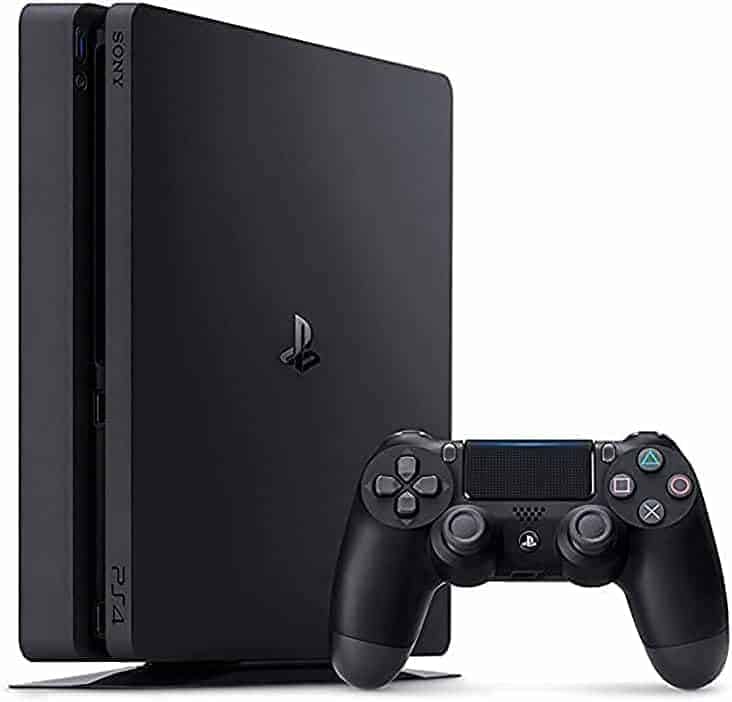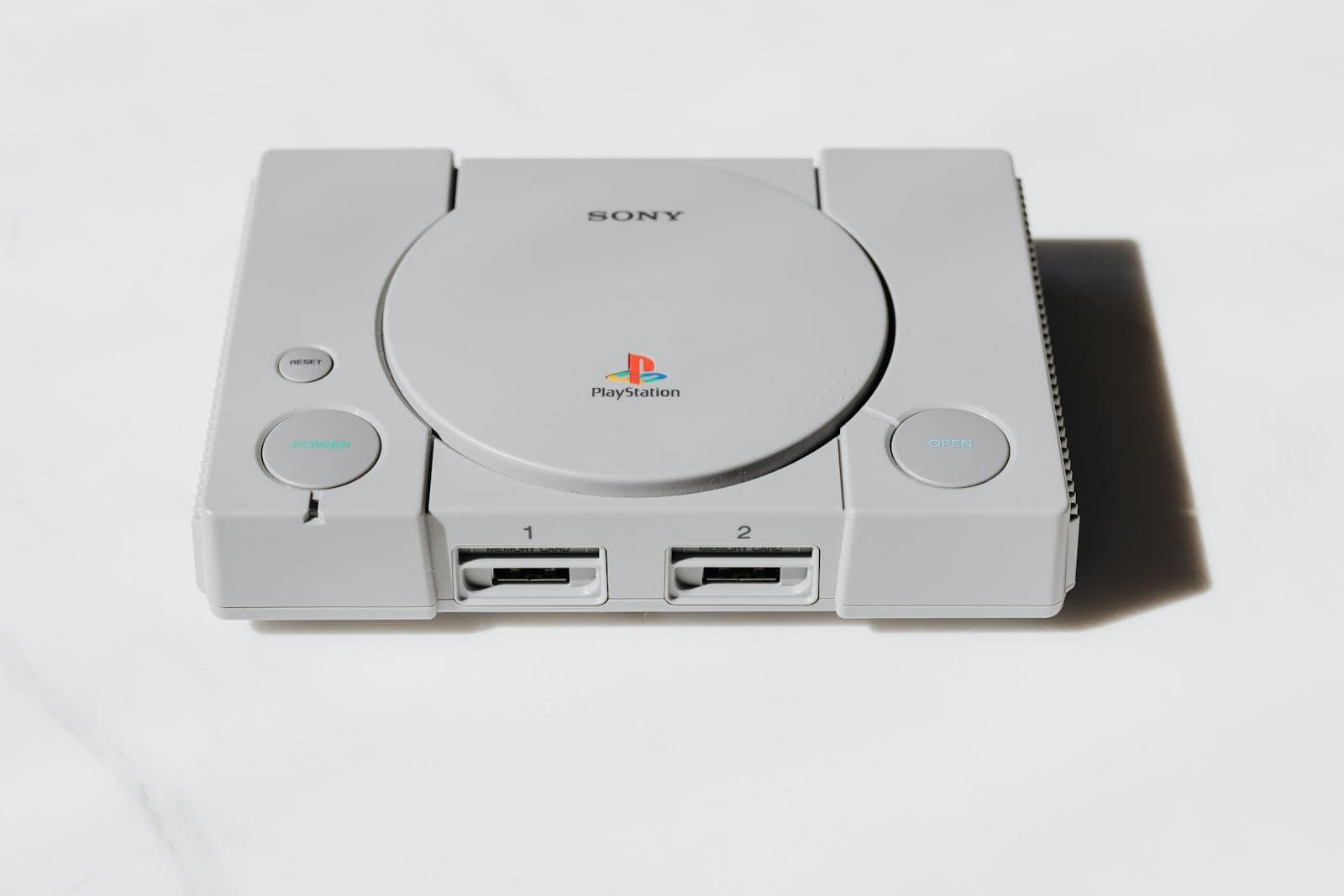The PlayStation brand has been a big part of the gaming world since it started. Sony changed the video game console market with the first PlayStation console in 1994. Each new PlayStation console has been important for gaming. PlayStation blends good hardware with lots of games, so it’s popular with many players and sets standards for the industry. The PlayStation consoles show Sony’s commitment to new technology. From the best-selling PlayStation 2 to the new PlayStation 5 in 2020, Sony always gives gamers strong consoles and fun gaming experiences. The consoles get better in power, graphics, design, and online features to match what players want.
PlayStation Consoles Listed In Order
| Console Name | Release Year | Generation | Type | Notes |
|---|---|---|---|---|
| PlayStation (PS1/PSX) | 1994 | 5th | Home | Shifted to disc-based games, iconic design |
| PlayStation 2 (PS2) | 2000 | 6th | Home | Best-selling console of all time, DVD playback |
| PlayStation Portable (PSP) | 2004 | 7th | Handheld | Powerful handheld rivaling home consoles |
| PlayStation 3 (PS3) | 2006 | 7th | Home | Blu-ray, PlayStation Network, strong exclusives |
| PlayStation Vita (PS Vita) | 2011 | 8th | Handheld | OLED screen, dual analog sticks, strong specs |
| PlayStation 4 (PS4) | 2013 | 8th | Home | Hugely successful, focus on social gaming |
| PlayStation VR (PSVR) | 2016 | 8th | VR Headset | Add-on for PS4, first mainstream console VR |
| PlayStation 5 (PS5) | 2020 | 9th | Home | Powerful hardware, fast SSD, DualSense controller |
| PlayStation VR2 (PSVR2) | 2023 | 9th | VR Headset | Advanced VR for PS5, eye-tracking, haptic feedback |
Key Takeaways
- Sony’s PlayStation consoles have consistently influenced the gaming industry since the original PlayStation in 1994.
- Technical advancements in PlayStation consoles have shaped gaming experiences and standards.
- The PlayStation brand’s impact is seen in its hardware evolution and wide array of games.
Absolutely! Here’s a breakdown of significant PlayStation consoles throughout history:
Major PlayStation Consoles Explored
PlayStation (PS1/PSX) (1994)
The original PlayStation marked Sony’s entry into the console market and delivered a revolutionary gaming experience with its focus on 3D graphics and CD-based games.
- Shift to disc-based gaming: Moved away from cartridges for larger storage and cinematic potential.
- 3D revolution: Introduced 3D polygonal graphics, creating a new standard for game visuals.
- Genre defining titles: Home to classics like Final Fantasy VII, Resident Evil, Metal Gear Solid, and countless others.
PlayStation 2 (PS2) (2000)
The PlayStation 2 built upon the success of its predecessor and became the best-selling video game console in history, offering a vast game library and new entertainment possibilities.
- DVD playback: Expanded beyond games, making it an all-around entertainment powerhouse.
- Backwards compatibility: Played the massive library of original PlayStation (PS1) games.
- Iconic game series: Hosted beloved franchises like Grand Theft Auto, God of War, and Kingdom Hearts.
PlayStation 3 (PS3) (2006)
The PlayStation 3 launched Sony into the HD era, introducing Blu-ray technology, powerful hardware, and the online PlayStation Network.
- Blu-ray introduction: Integrated Blu-ray disc playback, expanding its use as a home entertainment device.
- PlayStation Network (PSN): Online store and service for multiplayer gaming, downloads, and streaming.
- Strong exclusives: Developed acclaimed franchises like Uncharted, The Last of Us, and LittleBigPlanet.
PlayStation 4 (PS4) (2013)

The PlayStation 4 became one of the most successful consoles of all time with its focus on powerful hardware, a streamlined user experience, and acclaimed exclusive titles.
- Powerful hardware: Delivered stunning visuals and smooth performance for immersive gaming.
- Focus on sharing: Emphasized social features and gameplay sharing capabilities.
- Critically acclaimed exclusives: Home to award-winning games like God of War, Bloodborne, and Horizon Zero Dawn.
PlayStation 5 (PS5) (2020)
The PlayStation 5 is Sony’s latest and most advanced console, boasting cutting-edge technology, lightning-fast loading times, and immersive gameplay experiences.
- Next-gen graphics: Supports ray-tracing and high resolutions for breathtaking visuals.
- Ultra-fast SSD: Virtually eliminates loading screens and enables new game design possibilities.
- DualSense controller: Offers haptic feedback and adaptive triggers for deeper immersion.
The PlayStation 5 Pro: A Mid-Generation Upgrade
While the standard PlayStation 5 was still relatively new, rumors of a more powerful “Pro” model began circulating in early 2024. These rumors were confirmed in September 2024 when Sony will officially unveil the PlayStation 5 Pro. This mid-generation refresh is aimed to provide an even more immersive and visually stunning gaming experience.

Key Features and Improvements:
- Enhanced GPU: The PS5 Pro boasts a significantly more powerful graphics processing unit (GPU) compared to the base PS5. This allows for higher resolutions, smoother frame rates, and more realistic graphics in supported games.
- Improved Ray Tracing: Ray tracing technology simulates the behavior of light in games, creating more realistic reflections, shadows, and lighting effects. The PS5 Pro offers faster ray tracing performance, further enhancing visual fidelity.
- PlayStation Spectral Super Resolution (PSSR): This advanced upscaling technology uses deep learning algorithms to intelligently upscale lower-resolution images to 4K, resulting in sharper and more detailed visuals.
- Support for 4K at 60 FPS: With its increased processing power, the PS5 Pro is designed to deliver smooth 4K gaming at 60 frames per second in many titles, providing a more fluid and responsive gameplay experience.
Evolution of PlayStation Consoles
Sony’s PlayStation brand revolutionized home gaming, setting new standards in graphics and gameplay. Each console iteration brought significant improvements in performance and user experience.
The Birth of PlayStation and Early Success
The original PlayStation launched in 1994, marking Sony’s entry into the gaming industry. It featured advanced graphics capabilities for its time and supported games like Gran Turismo and Metal Gear Solid. The PS1, also known as the PS One, was a hit, selling millions of units globally.
Transition to the Sixth Generation
Sony’s PlayStation 2 debuted in 2000, integrating a DVD player and offering backwards compatibility with PS1 games. The PS2 boasted games like Grand Theft Auto: San Andreas and Final Fantasy X. A sleeker PlayStation 2 Slim version was later released, and the console became the best-selling home console of its time.
Seventh Generation Innovations
The PlayStation 3 arrived in 2006 with a built-in Blu-ray disc player and the introduction of the PlayStation Network. It provided Wi-Fi connectivity and featured models like the PlayStation 3 Slim and Super Slim, which offered varying hard drive sizes. Popular titles included Uncharted 3.
The Modern Era of Gaming
With the release of the PlayStation 4 in 2013, Sony delivered high-definition gaming, an improved DualShock 4 controller, and social integration. The PS4 Slim and PS4 Pro catered to different market needs, offering enhanced performance and 4K gaming capabilities.
Next-Gen Gaming Experience
Sony’s PlayStation 5 launched in 2020, pushing the boundaries with a DualSense controller that featured haptic feedback, 3D audio technology, and backward compatibility with PS4 games. The PS5 set new standards for loading speeds and game performance.
Portable and Experimental Systems
Sony also ventured into portable gaming with the PlayStation Portable (PSP) and later the PlayStation Vita, which included features like an UMD drive and touch capabilities. These devices expanded PlayStation’s reach beyond the living room.
The PlayStation’s evolution reflects Sony’s drive to innovate and respond to gamers’ needs, from the PS1’s groundbreaking introduction to the PS5’s cutting-edge technology.

Technical Advancements and Impactful Games
The evolution of PlayStation consoles showcases a journey of technological innovations and a roster of games that have redefined the gaming industry. The following section dissects the hardware enhancements, groundbreaking titles, and network features that have been central to PlayStation’s success.
Hardware and Performance
The original PlayStation launched with a CPU capable of delivering 3.5 million polygons per second. As the generations advanced, the PlayStation 2 introduced the Emotion Engine CPU and the Graphics Synthesizer, able to output 75 million raw polygons per second. The PlayStation 3 upped the ante with a cell processor and abilities to support resolutions up to 1080p. PlayStation 4 made a leap with its AMD Radeon graphics and 8GB of GDDR5 RAM. The latest, PlayStation 5, boasts hardware with an 8-core AMD Zen 2 CPU, pushing a remarkable performance that can support up to 4K resolution gaming.
Revolutionary Games and Series
- Final Fantasy VII: A revolution in storytelling and gameplay for RPGs.
- Gran Turismo: Realistic driving simulator that became a staple of gaming.
- God of War: Set new standards for action-adventure games.
- Grand Theft Auto: An open-world series offering unprecedented freedom.
- The Last of Us: Acclaimed for its narrative depth.
- Devil May Cry and Kingdom Hearts: Redefined their respective genres.
These games left lasting impacts, not only through gameplay but also by pushing the consoles to their technical limits.
Network and Online Capabilities
With the advent of PlayStation Network (PSN), Sony provided a platform for multiplayer gaming, digital downloads, and social features that enriched the gaming experience.
- PlayStation Plus: Enhanced value with free games and discounts.
- Ethernet and Wi-Fi: Standardized from PlayStation 3 onwards to support online gaming.
The backward compatibility feature, starting with PlayStation 2, allowed gamers to enjoy older titles on new systems, further extending the value of both the console and its games library.
Frequently Asked Questions
This section covers common inquiries about the PlayStation console series including release dates, model counts, and distinguishing features.
What are the release dates for each PlayStation console?
The original PlayStation was released on December 3, 1994. Sony then launched the PlayStation 2 on March 4, 2000, followed by the PlayStation 3 on November 11, 2006. The PlayStation 4 hit the market on November 15, 2013, and the PlayStation 5 was released on November 12, 2020.
How many PlayStation models have been released to date?
Nine PlayStation models have been released as of now, including different versions such as the PSOne, PS2 Slim, and PS3 Slim, along with the primary numbered consoles.
In what order were the PlayStation consoles released?
The consoles were released in chronological order: PlayStation 1, PlayStation 2, PlayStation 3, PlayStation 4, and PlayStation 5, along with their respective variations.
What are the key differences between the various PlayStation consoles?
Every new PlayStation console has seen significant improvements in processing power, storage capacity, and graphics capabilities. For example, the PlayStation 5 offers a custom SSD for faster load times compared to the PlayStation 4’s HDD, and it supports higher resolution gaming with improved frame rates.
When was the PlayStation 1 first launched?
The PlayStation 1 was introduced on December 3, 1994. It was Sony’s entry into the home gaming console market.
Are there any announcements for a PlayStation 6 release?
As of the current date, Sony has not officially announced a PlayStation 6. The focus remains on the PlayStation 5 and its expanding library of games and features.







